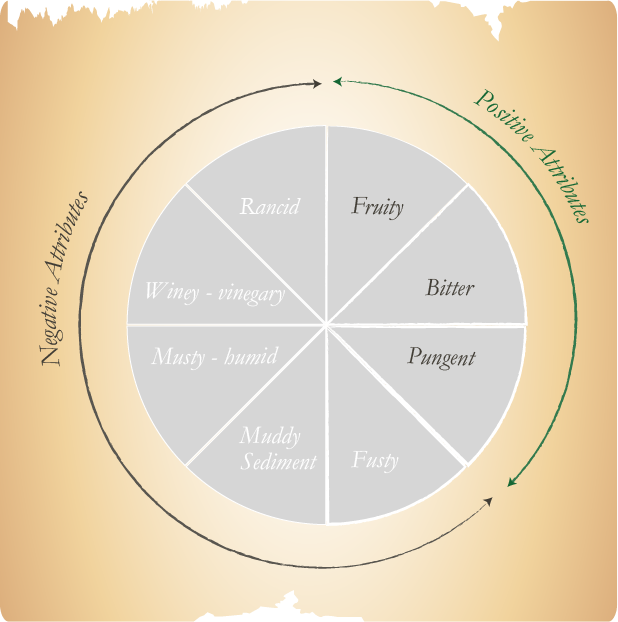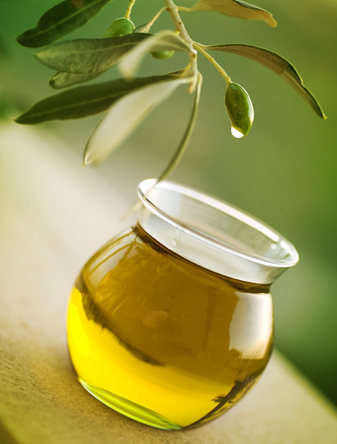Tasting olive oil is an art. Although it requires specific knowledge and a lot of practice, individual consumers can use basic knowledge to evaluate the quality of their olive oil.
Primary precautions:
- Taste the oil in the morning
- Don’t eat anything or have any foreign flavors in your mouth before tasting.
- Don’t have foreign smells on your hands or body such as perfumes or after shave.
- Taste the oil in a room free of any odors
Olfactory analysis:
- Pour a tablespoon of your olive oil into a small glass.
- Cover the glass with the palm of your hand and rotate it to soak all sides with the oil.
- Warm the sides of the glass with the palms of your hands to liberate the volatile aromas.
- Bring the oil as closely as possible to your nose and inhale slowly and deeply 2 or 3 times in succession.
- Note the sensations with reference to the positive and negative attributes (see Terminology).
Gustative analysis:
- Take a small sip and distribute the oil throughout the whole of the mouth cavity in order to obtain the most accurate perception.
- With your lips semi-closed, inhale rapidly two or three times in succession to distribute the oil in your mouth. Memorize the flavors then spit the oil out. The stronger the flavor of the oil, the longer you’ll need to wait before the next tasting.
- Note your findings with reference to the positive and negative attributes (see Terminology).
Characteristic flavor of certain oils reminiscent of wine or vinegar. This flavor is mainly due
to a
process of fermentation in the olives or in olive paste left on pressing mats which have not
been
properly cleaned, leading to the formation of acetic acid, ethyl acetate and ethanol.
Characteristic flavor of oils, which have undergone an intense process of oxidation and a
fragmentation of hydroperoxides into compounds with characteristic unpleasant odors.
The fruitiness depends on the variety and freshness of the olives. It is perceived directly
and/or
through the back of the nose.
Characteristic taste of oil obtained form green olives or olive turning color. It is perceived
on
the back of the tongue.
Biting tactile sensation characteristic of oils produced primarily from olives that are still
unripe. It can be perceived throughout the whole of the mouth cavity, particularly in the
throat.
Characteristic flavor of oil obtained from olives piled or stored, which have undergone an
advanced
stage of anaerobic fermentation.
Characteristic flavor of oil obtained from olives piled or stored which been left in contact
with
the sediment that settles in underground tanks and vats and which has also undergone a process
of
anaerobic fermentation.
Characteristic flavor of oils obtained from fruit in which large numbers of fungi and yeasts
have
developed as a result of its being stored in humid conditions for several days.








